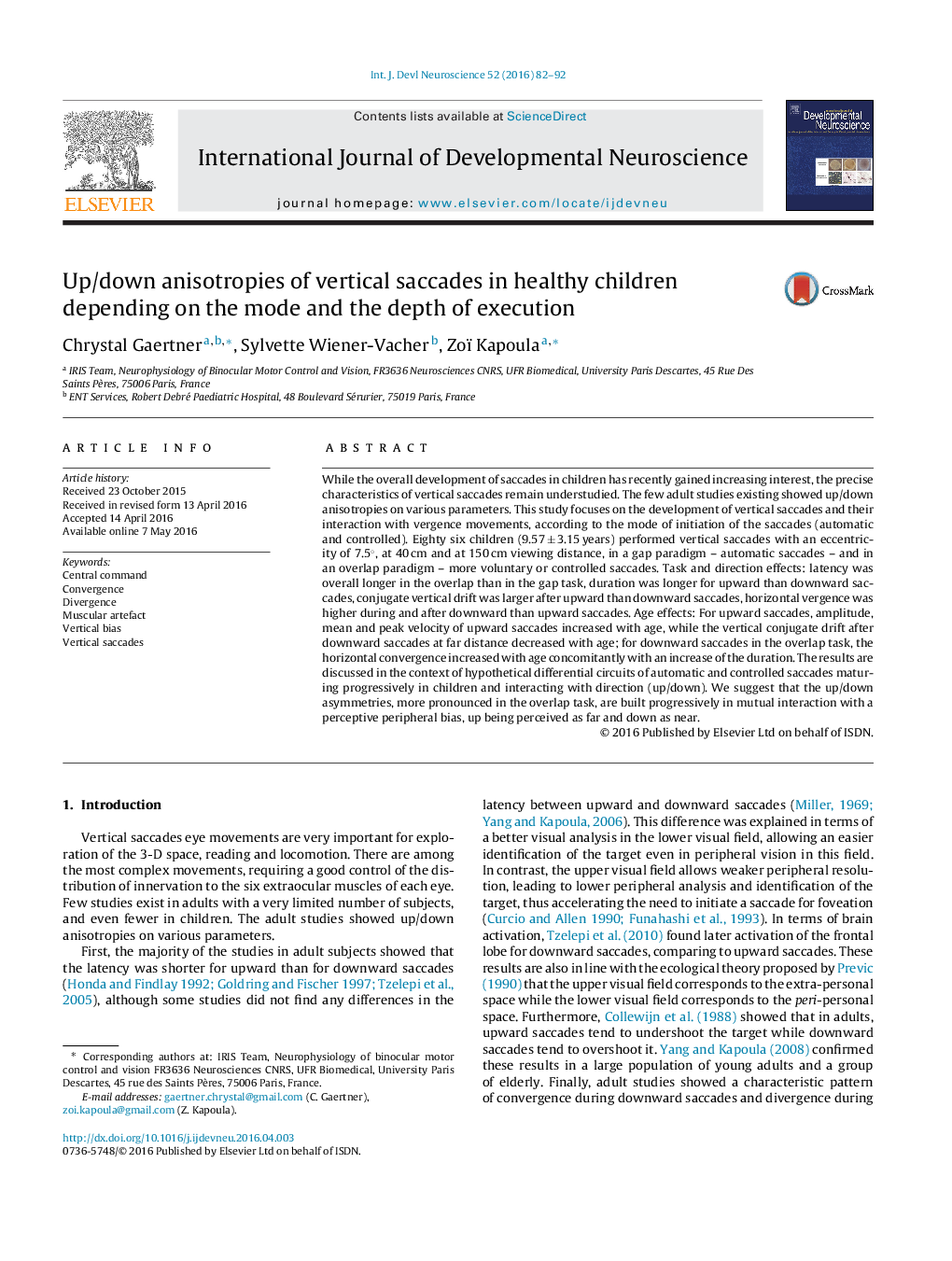| کد مقاله | کد نشریه | سال انتشار | مقاله انگلیسی | نسخه تمام متن |
|---|---|---|---|---|
| 2785584 | 1568378 | 2016 | 11 صفحه PDF | دانلود رایگان |
While the overall development of saccades in children has recently gained increasing interest, the precise characteristics of vertical saccades remain understudied. The few adult studies existing showed up/down anisotropies on various parameters. This study focuses on the development of vertical saccades and their interaction with vergence movements, according to the mode of initiation of the saccades (automatic and controlled). Eighty six children (9.57 ± 3.15 years) performed vertical saccades with an eccentricity of 7.5°, at 40 cm and at 150 cm viewing distance, in a gap paradigm – automatic saccades – and in an overlap paradigm – more voluntary or controlled saccades. Task and direction effects: latency was overall longer in the overlap than in the gap task, duration was longer for upward than downward saccades, conjugate vertical drift was larger after upward than downward saccades, horizontal vergence was higher during and after downward than upward saccades. Age effects: For upward saccades, amplitude, mean and peak velocity of upward saccades increased with age, while the vertical conjugate drift after downward saccades at far distance decreased with age; for downward saccades in the overlap task, the horizontal convergence increased with age concomitantly with an increase of the duration. The results are discussed in the context of hypothetical differential circuits of automatic and controlled saccades maturing progressively in children and interacting with direction (up/down). We suggest that the up/down asymmetries, more pronounced in the overlap task, are built progressively in mutual interaction with a perceptive peripheral bias, up being perceived as far and down as near.
Journal: International Journal of Developmental Neuroscience - Volume 52, August 2016, Pages 82–92
